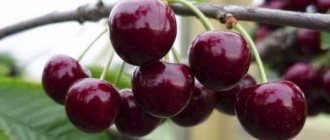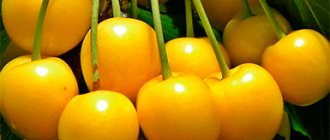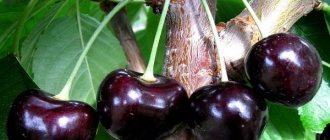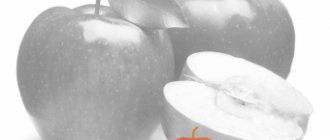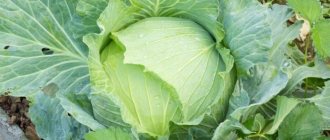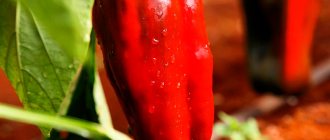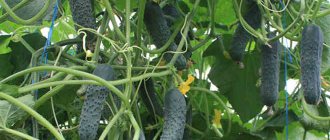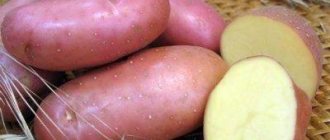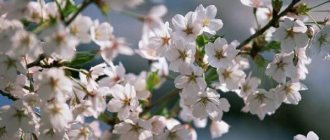History of variety selection
Cherry Napoleon is one of the old varieties bred by European breeders in the 19th century.
The rootstock for Napoleon was the Magaleb cherry Antipka. Napoleon is a representative of ancient cherry varieties, bred by European scientists back in the 19th century using the Antipka Magaleb cherry rootstock. In past decades, fruit trees were grown mostly in the southern regions of the Russian Federation, a little later the seedlings came to the city of Khasavyurt (Dagestan), and then the variety spread throughout Russia and today is found in various regions of the state.
general information
Back in the 19th century, breeders in Western Europe developed the Napoleon cherry variety, characterized by early development and limited growth. The plant's resistance to cold is low, but it is capable of producing a large harvest. The weakness of the variety is its susceptibility to rot. The formed fruits are medium in size, the peel is painted in a pale yellow tone. The norm for the plant is to be mottled with spots and dots.
The cherry pulp is dark red, the veins are less intensely colored than the main part. There is a lot of juice, it has no color of its own. In the conditions of Central Asia and warmer places, cherries ripen by mid-June. Trees can grow up to 5-7 m, fruiting occurs approximately in the 3rd year of development. The general age under favorable conditions reaches 25 years.
The crown of the cherry tree, based on the description of the variety, is close to the shape of a ball and cannot be called spreading, but there is a lot of foliage on it. Claims to growing conditions are great. Damp, cold soil is categorically unacceptable. It is very important that there is more heat in the air. Moreover, in winter, Napoleon cherries can survive frosts of -30 degrees.
Grafted onto antipka, cherries can bear fruit 4-5 years after planting. Disease resistance is somewhat overshadowed by instability to cherry fly aggression. The weight of the fruit ranges from 6.1 to 6.8 g. The taste is sweet, but there is a taste of moderate acidity. In a year you can collect up to 40 kg of fruits from a tree; they contain medium-sized seeds.
According to reviews from gardeners, the color of the fruit can be very different: there are pink, yellow, and black tones of the berries. The plant is officially classified as self-fertile.
Resistance to winds is decent; farmers should also take into account that:
- resistance to frost is sufficient only for southern areas;
- Watering is extremely important at the beginning of fruit formation;
- fluid is also needed when cold weather approaches;
- You should beware of fruit rot, moniliosis, aphids, and sawflies.
The first thing you should pay attention to is the size of the tree. It, like the Golden Ring barberry, can reach six meters in height, and its crown is even larger in diameter. Cherry is famous for its thick leaves and abundant fruiting, but it also has a significant drawback - it is capricious to growing conditions.
Cherry Napoleon
Main characteristics of the variety:
- The height of the tree is from 5 to 6 meters.
- The leaves are oval, elongated on both sides, light green in color.
- The fruits are large, from 6 to 10 grams, and can have pink, red and dark red tints.
- High yield - from 20 to 50 kilograms per tree.
- It has an average winter hardiness and can withstand up to -30 degrees.
- Fruiting occurs in the fifth year of life.
- Harvest ripening time is the end of June. This is one of the latest varieties of cherries.
- Fruits of universal purpose.
- The variety is resistant to fungus, but can be affected by pests.
The berries have a sweet taste and good transportability. They can be stored for up to two weeks (in the refrigerator), and can also withstand transportation over long distances. This allows the Napoleon variety to be used for industrial purposes. And here you can read information about planting Ovstuzhenka cherries.
Description of the variety Antey
Let us consider separately the appearance of the apple tree and the fruit itself.
The height of the tree is average, reaching 2.5 meters.
The crown is sparse, round-pyramidal, clearly divided into tiers, which facilitates formative and sanitary pruning, as well as fruit collection.
The leaves are large, dark green in color, have long petioles, the edges are cut with rounded teeth, the stipules are semilunar or lanceolate.
The base of the leaf is rounded, the tip is pointed.
Fruiting is mixed, but ringlets predominate; the tree can begin to bloom and bear fruit from another two to three years.
Flowering time is average - buds bloom in mid-May.
Apples of the Antey variety are large in size, weighing on average from 200 to 250 grams.
These apples have a blunt-conical, slightly faceted shape with a rather wide folded saucer and a deep, usually rusty funnel.
The sepals are closed, sometimes they can be half-open.
The stalks are often set obliquely.
The fruit is covered with a bright red or purple color, evenly washed out over the main green tone.
The abundant waxy coating gives the peel a bluish tint.
The pulp of apples of this variety is dense, juicy, pale greenish, the seeds are large, the seed chambers are open, medium-sized, the heart is bulbous.
Description
There are several varieties of the Napoleon variety: pink, black and yellow. They differ in size, shape and color of the fruit.
- dimensions 18x20x23 mm;
- weight from 6 to 6.5 g;
- oval shape;
- dark red, almost black color;
- juice and pulp are burgundy;
- medium-sized bone, pointed at the base.
- pale yellow color, which gradually changes to dark red;
- sweet taste;
- shiny thin skin;
- dark subcutaneous dots;
- weight 9-10 g;
- dense pulp.
The Napoleon pink variety is not very common because it is demanding on weather conditions. The tree does not tolerate cold weather, wet and cold soil. Conditions in the middle zone are not suitable for growing it. Because of the color of the fruit, this cherry is known as Napoleon yellow cherry.
The tree is tall, reaches a height of 6-6.5 m. The crown is wide, slightly spreading, spherical in shape with a large number of leaves.
Flowering occurs late - late May. The buds form on bouquet branches. White flowers are collected in inflorescences of 2-3 pieces. The harvest ripens in mid-to-late June.
Productivity
About 28-30 kg of fruits are removed from one tree. The yield is stable from year to year. Fruiting begins 4-5 years after planting the grafted seedling.
Transportability
The fruits of the Napoleon variety have good transportability and keeping quality. They retain their presentation for 10-14 days. Cherries have a dessert purpose and are also suitable for canning.
Drought resistance
Drought resistance is above average. Watering is necessary only for young plantings. Moisture is also added during the flowering period.
Frost resistance
The frost resistance of the Napoleon variety is above average. To help the tree survive the winter better, preparatory measures are carried out in the fall. Due to its late flowering, the variety is less susceptible to return frosts.
The described cherry variety is a representative of the mid-late ripening group, since the trees begin to bear fruit only 4-5 years after the young plant is placed on the site. Up to this point, the growth and development of the plant is characterized by increased intensity, and then decreases slightly.
The height of a ten-year-old plant often reaches 5-6 m, although taller specimens up to 7 m are also found. The crown is of a standard spherical shape, very spreading. The leaf blades are light green, oval and slightly elongated at both ends. During flowering (usually April), lush white inflorescences form on the shoots, with two or three flowers in each
At the end of flowering, dark red or pink fruits are laid in place of the buds, which weigh at least 5–10 g each when fully ripe. All of them have an elongated oval shape, which in some cases becomes broadly heart-shaped over time. Under the medium-thick skin lies a dense, gristly and very juicy pulp, with a richly sweet taste, sometimes with a slight sourness. The berries reach ripeness in early July, although they are often harvested earlier - at the end of June.
Cherry Napoleon is a high-yielding, late-ripening variety. A tree of strong growth forms a dense, spherical, well-leafed, spreading crown. It can reach a height of up to 5–6 meters. When the plant is young, intensive growth is observed, and at the time of fruiting it is moderate. The tree is decorated with large leaves, painted dark green, in the shape of an elongated oval with a pointed tip, without pubescence.
They delight with their flowering in early April. The flowers are medium-sized and have saucer-shaped petals, collected in inflorescences of 2–3 pieces. The large dark red fruits attract attention, which, when ripe, acquire a black color. The weight of one berry is up to 6.5 g. The fruits have an irregular oval shape.
Another late-ripening, heat-loving European variety is the pink Napoleon cherry. It is rarely cultivated in central Russia, since the crop is highly susceptible to high frosts. Therefore, the variety does not take root well and produces a poor harvest in areas with low air temperatures. And in the southern latitudes it gives a rich harvest of delicious bright pink cherries, distinguished by their large size and density of pulp.
There is no yellow Napoleon cherry; there are only two types of this variety - black and pink.
Napoleon cherry has two color variations: dark-colored and light-colored. They differ only in the color of the fruit and the degree of susceptibility to pests and diseases.
The original variety of the variety is now found under the names:
- Napoleon Bigarro,
- Napoleon Royal Anne,
- Napoleon pink,
- Napoleon yellow.
In previous years, this variety was zoned throughout the southern part of the USSR. Currently, this variation is not included in the list of varieties zoned in Russia, however, it is readily grown by amateur gardeners in the southern regions. The fruits of this cherry are very interestingly colored. They are pale yellow at first. with a bright red blush on the sunny side, and as they ripen they become almost entirely pinkish-red, with a small yellow spot on the side hidden from the sun. The pulp of the fruit is light yellow, the juice is colorless. The disadvantage of this variety is its very high susceptibility to fruit rot.
Black Napoleon is a variety with almost black fruits. This cherry has a dark red skin, juice and pulp. The Napoleon black variety is zoned in Dagestan. This variety is more disease resistant than the original variety, but is more susceptible to cherry fly.
Cherry Napoleon black has dark-colored fruits
The fruits are large, weighing 6-7 grams, uneven heart-shaped. The skin is thick, shiny, dark red in color. The flesh is dense and crispy and releases ruby juice when pressed. The taste is dessert, rich, sweet with slight acidity and exquisite bitterness.
Ripens late, in the second decade, or even at the end of June. Productivity very much depends on the age of the tree and on average ranges from 25-30 to 70 kilograms. The shelf life reaches 10-14 days if you place the container with the harvested crop in a cool place.
Sweet cherries tolerate long-distance transportation well. The purpose is wide, in compotes and other preparations Napoleon perfectly retains its shape, reviews of products made from it are always the most positive.
The trees are tall, reaching a height of 5-6 meters. Napoleon grows especially intensively in the first years, before it begins to bear fruit. Then the trees must be properly shaped by pruning, laying down skeletal branches.
The crown consists of sparse branches and has the shape of a ball. The leaves are large and dark green, pointed at the ends. The foliage is abundant. It blooms and bears fruit on bouquet branches. White flowers are collected in small inflorescences of 2-3 pieces. Flowering is early, in April.
| Color | dark |
| 5-6 m | |
| 4,9 / 5 | |
| Size | large |
| 25-30 kg | |
| Term | end of June |
| low | |
| average |
Description and characteristics
Cherry trees not only generously provide their owners with delicious berries, but can also decorate any garden. They look very beautiful during flowering and fruiting.
The “Napoleonic” tree grows large (5-6 m). It gains growth especially rapidly before it begins to bear fruit. Cherry bark differs from cherry bark in color: it is much lighter. Sparse branches covered with dense foliage form a beautiful spherical crown. The leaves are large, elongated, with a sharp tip, dark green in color. White flowers bloom on bouquet branches, collected in inflorescences of 2-3 pieces.
“Black Napoleon” is one of the bigarro varieties , the fruits of which are distinguished by dense pulp that does not soften in compotes and canning, and is stored for a long time. Like other bigarros, the black Napoleon cherries are firm, dense and crunchy. They are quite large, weighing 6-7 g.
The skin is also dense and thick and does not burst. Hidden inside is a seed in the shape of a pointed egg, the size is medium, and the weight is approximately 6.5% of the total weight of the berry. The shape of the berries is not round, but more heart-shaped. The color of the skin, like the pulp, is dark ruby, sometimes appearing black. The berries are very tasty, intensely sweet, with sourness and even a little bitterness.
Winter hardiness and disease resistance
Cherries themselves are heat-loving. "Napoleon Black" is no exception. The frost resistance indicator is average. It easily survives in the Ukrainian winter with frosts down to -30°C. Therefore, there are no territorial restrictions in Ukraine. And in Russia it can only survive in the southern regions.
"Napoleon" is resistant to many diseases. But without chemical treatment, it can still get sick with moniliosis, coccomycosis and fruit rot. There is a threat from the following pests: cherry fly, aphid, leaf-eating fly, cherry elephant.
“Napoleon black” refers to self-sterile cherry varieties. This means that the tree will not bear fruit or will bear only a few fruits, without cross-pollination. To get the maximum yield, you need to plant it together with a pollinator, that is, a different variety of cherry, which blooms at the same time as “Napoleon”. There is no need to plant a pollinator if a tree that is suitable for this role is already growing in the neighboring area. The best pollinators for the “Napoleon black” cherry are: “Valery Chkalov”, “Cassini early”, “Zhabule”, “Drogana yellow”, “Early mark”.
Ripening period and yield
The young tree begins to bear fruit in the fourth year after planting . Although “Napoleon” blooms early (late March - early April), the berries ripen only in the summer (first or second decade of June). Therefore, it belongs to the late cherry varieties). This is very convenient, since Napoleonic cherries ripen at a time when other varieties have already died. Napoleon has a high yield: one tree can bear 20-50 kg of fruit in one season.
Transportability
Good transportability is one of the advantages of the Napoleon Black variety. Thanks to the dense pulp and thick skin, the berries can be transported over long distances. At the same time, they do not lose their presentation, retain their shape and taste.
Another advantage of the variety is the good keeping quality of the fruit . Cherries can be stored in a cool place (cellar or refrigerator) for two weeks. At the right temperature, they remain fresh for a long time and do not spoil.
Direction
Black cherries "Napoleon" are very tasty fresh. Tasters highly appreciated their taste (4.9 points out of 5). Berries are consumed not only fresh.
They are used in different directions:
- In cooking . Dense berries do not soften during heat treatment. Therefore, compotes, jams, jellies, candied fruits are prepared from them and canned. They are dried and frozen.
- In dietetics . Cherry berries are low-calorie (50 kcal per 100 g). They are included in a diet for weight loss.
- In folk medicine, berries (fresh and dried), stalks, leaves and flowers are used. They have a lot of useful properties: they strengthen, relieve pain, tone, improve blood circulation, appetite and intestinal motility, and cleanse the body of bad cholesterol. Infusions and decoctions are prepared from them.
- In cosmetology . Due to its high antioxidant content, cherries can slow down skin aging. Masks, creams and other cosmetics are made from it.
How and when to plant
A tree of this variety is extremely demanding of soil and growing conditions. Despite its wide distribution, such cherries do not tolerate wetlands and insufficiently warmed places. If you look at the description of the Iput cherry, then for it, as for the Napoleon variety, the groundwater level should be at least two meters, and the area before planting should be protected from drafts and darkness. The key to good survival of seedlings will be preliminary soil preparation: applying organic fertilizers and ensuring good drainage.
Landing algorithm:
- It is better to prepare the planting site two to three months in advance so that the soil can “stand.”
- The tree is large in size, so the distance between seedlings is necessary at least 3 - 4 meters.
- Mineral complexes and humus must be added to the dug hole.
- When planting, a peg is used to tie up the plant to prevent deformation of the trunk.
- The root collar is oriented towards the south; it should rise slightly above the ground.
- After planting, the soil is compacted well and then watered abundantly. But this article will help you understand how to plant cherries of the Bull's Heart variety.
Characteristics of the variety
The main characteristics of fruit trees that are of most interest to gardeners were and remain productivity, level of frost resistance, the ability of the plant to pollinate itself, and resistance to diseases and crop pests. For this reason, it makes sense to study these features before planting Napoleon cherries.
Napoleon is a proven cherry variety that has stood the test of time.
Winter hardiness
The winter hardiness and drought resistance of trees of this variety are at an average level, therefore, with stable temperature drops to -30°C, it is better to cover young plants for the winter. For this, artificial or natural materials are used, but always after preliminary treatment of the soil, whitewashing of trunks and other activities related to preparing plants for the winter season.
Best pollinators
The Napoleon variety is a self-fertile plant, which means that in order to produce tasty berries, you will have to plant pollinating trees in the garden. The best of them are considered to be the varieties Valery Chkalov, Drogana yellow, Zhabule, Cassini early, Early mark. When growing cherries on a mass scale, it is advisable to arrange paired rows. Large Napoleon cherries are stored for a long time, are transportable, and have excellent characteristics
With proper organization of care, at least 28-30 kg of berries can be removed from 1 tree, although such results can be achieved no earlier than 5-6 years of growing the grafted young plant. In the southern regions, one 10-year-old tree can produce up to 70 kg of berries, but this is rather an exception to the rule and it is better to focus on the given averages.
Ripe Napoleon cherry fruits are excellent for any culinary use, not only fresh, but also dried or frozen. They go well with other berries and fruits, and can also be used when harvesting for the winter. Some gardeners even use the fruits in folk medicine and the culinary industry, which is partly due to their high tasting score of 4.9 out of 5 points.
Napoleon cherries are suitable for winter harvesting
Thanks to the efforts of breeders, Napoleon cherries (both black and pink varieties) are highly resistant to moniliosis, coccomycosis, fruit rot and other fungal diseases, but at the same time suffer from pest attacks. Among insects, trees are afraid of aphids, sawflies and cherry flies, although the latter is less relevant for pink “Napoleonic” cherries.
The advantages of Napoleon cherries are obvious to many gardeners, and to ensure their presence it is enough to simply plant the plant on your site.
- The strengths of the variety are deservedly considered to be the following characteristics:
- high yield rates;
- excellent keeping quality of the harvested crop (berries can be stored in a cool place for up to 2 weeks);
- excellent presentation, and it does not suffer at all even during long-term transportation;
- possibility of universal use (cherries are equally tasty both fresh and after freezing or processing into compotes and preserves);
- comparative ease of crop care.
- As for the disadvantages of growing Napoleon cherries, it is worth remembering:
- average resistance to winter temperature drops;
- the need for the presence of pollinating varieties;
- low resistance to cherry fly.
When choosing Napoleon cherries, you need to familiarize yourself with the characteristics of the variety, which includes information about the crop’s resistance to low temperatures, excess moisture, diseases and insects, as well as information about the timing of flowering and ripening of berries.
The Napoleon cherry is characterized by an average yield, the plant can withstand down to -30 C. And also thanks to the deep root, which allows it to receive moisture from the lower layers of the earth on hot days, the crop can withstand dry weather.
The cherry variety Napoleon is declared as self-fertile. But for a high-quality harvest, you can plant the varieties Valery Chkalov, Early Mark, Zhabule, and Drogana Zheltaya nearby. For large plantings, it is recommended to form seedlings in paired rows.
Pollinators
The variety is declared as self-fertile, that is, nearby pollinators are not required. Fruiting begins at the age of 4, life expectancy is significant, up to a century. Winter hardiness is sufficient only for cultivation in the southern regions. Withstands winds well.
Watering is especially important after flowering, when the fruits are growing, and in late autumn, for better overwintering. In summer, the deep root allows it to extract moisture from the lower layers and the plant can survive relative drought. The rootstock most often is the unpretentious magaleb. In this case, a deep, hardy root system is formed.
Napoleon black is considered a resistant cherry, but can still be affected by diseases such as moniliosis, fruit rot and coccomycosis. Among the pests, the cherry fly can spoil the harvest; aphids, sawflies and leaf-eating caterpillars sometimes appear on trees.
Planting and care
It is better to carefully prepare the planting site - by digging it up, clearing it of weeds and fertilizing it. The planting hole must be spacious so that it can accommodate both the “nutrition” for the first years of growth in the form of fertilizers and the root system of the seedling. A tree with bare roots is the easiest to purchase, and it costs less than one with a ball of earth. It is convenient for two people to plant it to control the depth. The root collar is slightly raised, and in the case of autumn planting, it is hilled up only for the winter, and uncovered in the spring.
Caring for a tree involves a number of activities. In addition to watering, this includes keeping the tree trunk clean and applying fertilizers. To maintain health, the crown should be treated with fungicides and insecticides for preventive purposes.
Aftercare for cherries
In order for a full-fledged, high-quality harvest of Napoleon cherries to be formed, it is enough to perform such important procedures as:
- Watering. It is necessary to properly organize watering, moistening the soil and maintaining it in an optimal state for the normal development of Napoleon cherries. The plant needs water after flowering, during the formation and filling of fruits, and also during dry periods, it is necessary to saturate the soil to a depth of 40 cm. It is advisable to water in the fall to saturate the plants with moisture before the cold season.
- Trimming. Provides for shortening annual shoots, pruning incorrectly located branches directed into the crown, as well as eliminating damaged, dry and frozen branches. After pruning, it is necessary to treat the cut areas using garden varnish for rapid healing and prevention of disease and insect infestation.
- Feeding. To improve the growth of crop shoots, it is necessary to provide it with the necessary nutrients in sufficient quantities. For these purposes, add fertilizers using organic and mineral compounds.
- Preparing for winter. Winter shelter is needed if the crop is grown in a harsh climate. In rare cases, shoots may freeze, but Napoleon cherries show rapid recovery of parts of the tree damaged by frost.
Caring for cherries is simple and can be done by all gardeners who want to grow them. It is important to carry out all the activities, and, feeling cared for, it will grow and develop faster, giving it delicious berries.
Cherries of the Napoleon variety must be protected from the cherry fly and other parasites that intensify their activity after the winter period. And also during this period, you need to constantly inspect the plant, since in the spring it can easily catch a dangerous disease, such as coccomycosis, fruit rot, moniliosis.
Prevention of diseases and pests consists of spring treatment of trees using biological products and insecticides. Work should be carried out in April, before the sap begins to flow.
To protect cherries, it is necessary to spray using Bordeaux solution or azophos, and to achieve maximum effect, combine the use of these products by alternating them.
Before fruiting begins, the seedling needs minimal conditions: watering, weeding and loosening. Around the fifth year of life (or the third after planting), more attention is needed. First of all, spring fertilizing with nitrogen-containing fertilizers is carried out. This is necessary to form the green part. The use of nitrogen together with potassium-phosphorus complexes is not recommended. But how to plant columnar cherries and what varieties there are, reviews from gardeners will help you understand.
Important activities during cultivation:
- Watering is necessary frequently, but moderately, because the plant does not tolerate waterlogging. As the tree grows, the number of waterings is reduced to three times per season.
- Weed control will improve markedly if you mulch the soil at the roots. For the same purpose, green manure plants can be planted in the root area. In addition to the obvious displacement of weeds, after mowing, green manure will provide additional nutrition for the tree.
- Loosening also needs to be done regularly, preferably after each watering. It is necessary to loosen to a depth of no more than 5–7 centimeters so as not to damage the root shoots.
- After harvesting, it is imperative to support the plant with potassium and phosphorus. This promotes the formation of fruit buds for the next year.
- Organic fertilizing can be done throughout the season. For this, peat, humus, and a diluted infusion of manure or chicken droppings are used. On depleted soils, the frequency of fertilizing is increased.
- Pruning is carried out every year. In the spring it is necessary to inspect and remove old and dry branches; the purpose of autumn pruning is to form the crown. To do this, the branches are thinned out in the middle of the crown, and young shoots are shortened by a third of the length they have grown over the year. After pruning, it is necessary to treat the cut estimate with garden varnish to prevent infection.
- Preventive spraying is carried out at the beginning of the season (copper sulfate or Bordeaux mixture). For treatment, special insecticides are used that target a specific problem. Used when necessary. The variety is often affected by the cherry fly, so it is better to have something against it in your arsenal.
- Winter shelter is only necessary in harsh climates, as well as when there is a high risk of a snowless winter. Shoots rarely freeze, but even in this case they quickly recover. Young seedlings are recommended to use crown protection, for which the branches are pressed against the trunk, loosely tied and covered with burlap. For mature trees there is no need to make such a shelter.
It is also worth learning more about how the Bryansk pink cherry tree is grown.
"Napoleon" is a high-yielding and very resistant cherry. At the moment it is not very widespread, because modern varieties are worthy competition, but in terms of its quality indicators it is a very worthy option. Despite some capriciousness in terms of growing conditions, it takes root well and produces a consistently large harvest. The basic rules for caring for this variety are discussed in our article.
And here you can read reviews about Revna cherries, and learn about the existing description of the variety and about pollinators.
After a short process of planting a Napoleon cherry seedling, a long stage of caring for the plant begins, on which the abundance of fruiting and the quality of the future harvest depend. The main activities in this case will be the following.
Watering and fertilizing
The regime of watering and fertilizing the planted crop depends on the region where the fruit trees are grown. For example, in the southern regions of the Russian Federation, emphasis should be placed on regular moistening of the substrate (especially during dry periods), and fertilizers are usually needed for depleted soils. In this case, you can limit yourself to organic matter in the form of rotted cow manure or plant waste, which is added to the soil mainly in the autumn and soon after the next watering of crops.
In general, the substrate moistening scheme looks like this:
- in May, immediately after the trees bloom, watering is needed for optimal development of already set fruits;
- during the period of filling berries, liquid is important to increase their juiciness and brighter color;
- Before winter frosts, timely moisture-recharging watering will contribute to better frost resistance of plants.
During periods of drought, it is important to moisten the soil well so that the water reaches a depth of 40 centimeters. Surface watering will not bring the desired result, since the moisture simply will not reach the roots of the tree.
The liquid consumption rate for 1 adult plant is at least 40–50 liters of water
Trimming
The process of pruning Napoleon cherries is not much different from similar actions in relation to other varieties of cherries, therefore the general rules apply in this case:
- annual shoots are cut to 1/5 of the trunk length;
- sanitary pruning involves the complete cutting out of all improperly growing branches, dry and damaged specimens.
Both options for the procedure most often occur in the spring, but if absolutely necessary, sanitary cleaning of the crown can be repeated in the fall (after all the leaves have fallen).
Upon completion of the procedure, all large sections should be treated with garden varnish, which is an excellent prevention of diseases and pests, and also promotes faster regeneration of wood tissue
Preventive treatment of cherry trees with insecticidal preparations is rarely carried out, but in case of severe pest infestation (especially cherry weevil), it would be appropriate to spray the crown and trunk with Aktara, Actellik or Enzhio preparations. The solution is prepared in accordance with the available instructions.
With the arrival of spring, during the swelling of the buds, you can spray the trees with a solution of copper sulfate (100 g of the substance is dissolved in a bucket of water)
Landing Features
Before planting Napoleon cherries, you need to take into account all the needs of the crop for its normal growth, proper development and yield formation.
Recommended timing
Napoleon cherries can be planted in spring and autumn. Planting in spring should be done before the buds swell, since a tree planted later will be sick and may not take root. Autumn is also considered a favorable time for planting. Before winter sets in, the roots will have time to deepen and take root. And with the arrival of spring, intensive growth and development of cherries will be observed.
Napoleon cherry is demanding in terms of growing conditions; it does not tolerate wet and cold soils and needs a huge amount of heat. Groundwater must be at least 2 m, and the area must be protected from drafts and shading. The plant loves nutritious soil composition, so you should choose moist soil with good drainage and sufficient water resistance and optimal acidity.
Cherry Napoleon is quite whimsical in choosing plants for its neighbors. The best solution would be to plant cherries, cherries, grapes, rowan, and hawthorn nearby. But the apple tree, plum tree, and cherry plum will shade the cherry tree, so they should be planted at a distance of 5–6 meters.
When purchasing planting material, you need to pay attention to its appearance. The Napoleon cherry seedling should be no older than 3 years, the bark should have an even color, without mechanical or thermal damage. The presence of kidneys is a must. The root system should have 3 roots, 0.2 m each. If the root is brown when cut, then it is damaged by frost, and such a seedling should not be purchased.
Landing algorithm
An important criterion for cultivation, on which the regularity of fruiting and the quality of the harvest directly depends, is correct planting.
Stages of the Napoleon cherry planting process:
- Prepare the area for planting in advance by digging it up, clearing it of weeds and fertilizing it well.
- Make planting holes, keeping a distance of 3–4 m between them.
- The bottom of the pit should be equipped with fertile black soil mixed with a complex set of fertilizers.
- Insert a peg, which will serve as a reliable support during the growth process.
- When installing seedlings, you need to orient its root collar in the southern direction, and it should also rise slightly above the ground surface.
- Cover with soil substrate, compacting thoroughly to avoid voids.
- After planting, water with warm water and mulch the soil near the tree trunk with peat or humus.
Proper planting will have a positive effect on yield growth and the development of the tree as a whole.
The agricultural technology of this variety is common for southern cherries and is no different from growing other varieties. Napoleon cherries are planted in early spring in well-lit areas with fertile, non-acidic soil. The planting pattern is 6x8 meters for trees on a vigorous seed rootstock and 4x6 meters for seedlings on a dwarf rootstock. During drought, watering is needed 2 times a month, from 1–2 buckets of water per young plant in the first year of planting to 10–12 buckets per adult tree.
Fertilizers are applied in the spring when digging the soil in the following doses per 1 square meter of tree trunk circle:
- 20–40 g of potassium sulfate;
- 40–80 g superphosphate;
- 20–50 g of ammonium nitrate.
In early spring, before the buds swell, formative pruning is carried out on young trees up to 5 years of age. Mature trees need sanitary pruning, which is carried out at the same time, and if urgently necessary, at any time of the year, except winter. It consists of removing dry and broken branches.
The main problems of this cherry are fruit rot and cherry fly.
Planting any fruit tree begins with choosing a suitable site and proper preparation of planting material, not to mention the rules and technology for performing the planting process itself. Each of these actions has its own characteristics, which should not be forgotten at the stage of planning the procedure.
Recommended timing
The optimal time for planting seedlings of the Napoleon variety is mid-autumn, but in accordance with weather conditions. Typically, planting work is carried out at least 2-3 weeks before the expected frost, so that the plants have enough time to fully adapt and prepare for the winter season.
In northern growing regions, with early winters, spring planting will be more preferable, carried out immediately after the snow melts, but before buds appear on the seedlings. With a high degree of probability, this will avoid freezing of the plant root system, but to be on the safe side, you can install a temporary shelter over the seedling.
How to plant Napoleon cherries
To successfully grow Napoleon cherries, it is important to choose the right seedling. Be sure to comply with the deadlines for work and the requirements for the place where the crop is grown.
How to choose a seedling
It is recommended to choose seedlings for planting in Antipka. This is a common cherry rootstock in southern Russia. In nurseries, it produces vigorous plants that are resistant to frost and drought. Antipka grows well on any soil, except clayey and saline. Its root system penetrates to a depth of 4 m. Cherries grafted on Antipka grow shoots more slowly, but begin to bear fruit earlier. The seedling is checked for the absence of rotten areas, mold, cracks and other damage.
Planting dates and scheme
The optimal period for planting the Napoleon variety is autumn. When choosing specific dates, they are guided by weather conditions. The work is carried out 2-3 weeks before the cold snap. During this time, the plant will have time to take root and prepare for winter. In cooler climates, cherries are planted in the spring, after the snow has melted but before the buds open.
Important! For cherries, choose a sunny area, protected from the wind.
The Napoleon cherry does not tolerate the proximity of apple, plum, pear and other fruit trees. Leave at least 5 m between them as crops compete for moisture and minerals in the soil. Closer proximity to cherries is allowed. The Napoleon variety prefers fertile light soil: black soil, loamy or sandy loam. In peat bogs, sandy and marshy areas, the tree develops slowly and may die. The crop is not planted in lowlands; it is better to find a place on the south or west side.
Pit preparation
Regardless of the planting time, the pit for the Napoleon variety seedling is prepared in advance. It is filled with substrate and left for at least 2-3 weeks. If you plant cherries right away, they will be damaged when the soil shrinks. For spring planting, a pit is dug in the fall.
Planting procedure for the Napoleon variety:
- First, dig a hole measuring 60x60 cm to a depth of 70 cm.
- If the soil does not allow moisture to pass through well, a drainage layer 15-20 cm thick of expanded clay or crushed stone is installed at the bottom.
- Then mix chernozem, 2 buckets of compost and 250 g of wood ash.
- Half of the substrate is moved into the hole and left to shrink.
- When the time for work comes, the remaining soil is poured in the form of a hill.
- The roots of the tree are straightened and carried to the hill.
- Place soil on the roots and compact it tightly.
- The seedling is watered abundantly. The tree trunk circle is mulched with straw.
Cherry care Napoleon
Constant care will ensure the growth and fruiting of the Napoleon variety. Particular attention is paid to fertilizing and crown formation.
Feeding and watering
In early spring, the tree is watered with mullein infusion. The fertilizer contains nitrogen necessary for the growth of shoots and leaves. After flowering, fertilizers based on phosphorus and potassium are applied. 35 g of superphosphate and potassium salt are embedded in the tree trunk circle. The substances can be dissolved in 10 liters of water and poured under the root of a tree. Typically, plantings are watered only in severe drought. The water norm is 5 buckets for a young tree and 10 buckets for an adult cherry.
Weeding and loosening
The soil in the tree trunk circle is regularly cleared of weeds. After watering and precipitation, the soil is loosened so that the moisture is better absorbed and does not stagnate. To do this, use a pitchfork, cultivator or other garden tools.
Crown formation
By pruning, the crown of the cherry tree acquires the correct shape and productivity increases, and the garden suffers less from fungal diseases. Treatment is carried out in autumn or spring, when sap flow in trees is slow. A tiered-sparse crown form is suitable for the culture. For each tier, 3 powerful shoots are left. The remaining branches are cut off. Between tiers they maintain 0.5 m. Formation of the crown takes 5-6 years. Every year, broken, dry, diseased and frozen shoots are cut out. How to shape cherries is described in the video:

